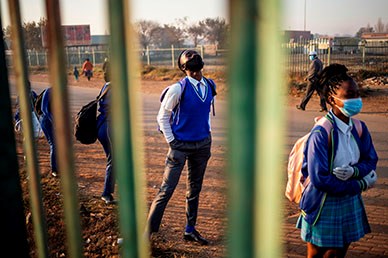Now more than ever, safe and healthy journeys to school are crucial. An epidemic on wheels has led road traffic injuries to be the #1 killer of those ages 5-29. Today, young people are further threatened by a global pandemic.

The journey to and from school must be safe from both of these threats. Many of the solutions for one threat also address the other - such as reducing urban vehicle speed, promoting walking and cycling, avoiding unnecessary vehicle journeys, and creating more space for drop-off and pick-up - key interventions as COVID-19 is less likely to spread outdoors. These measures enable safe physical distancing and help to lower air pollution which emerging evidence suggests may exacerbate COVID-19.
UNICEF, with support from Child Health Initiative (CHI) and members such as Save the Children, has issued guidance to help manage COVID-19 risks and to ensure the safest, healthiest journeys to school possible for all children, including those with disabilities. CHI is also hosting a global database to share examples of safe and healthy school journeys during the pandemic. Additionally, we are sharing pre-pandemic examples that are applicable now since they are conducive to outdoor activity, physical distancing and proper hygiene, and contribute to healthier and safer streets. To tackle road traffic injuries, these examples must be made permanent. Visit the CHI toolkit for more ideas on ensuring safe and healthy journeys to school.
To support this database, we are also providing an overview of the guidance, examples of safe and healthy journeys to school grouped by mode of transport, as well as examples focused on vulnerable and marginalized populations. There are also sections on improving air quality and enhancing the safety of school drop-off and pick-up areas.
We invite you to view and contribute to the global database. Examples must exhibit:
Proper road safety (helmet-wearing, seat-belt use, separation of road users, low speeds, etc);
Compliance with local, regional, or national physical distancing, mask-wearing, and hygiene guidelines;
Safe vehicles and drivers;
Where possible low or zero emissions; and
Successful implementation or practical learning.
This CHI database of country case examples has been developed in partnership with UNICEF and Save the Children.
Please use the Form below the preview to submit your examples.